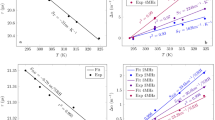Abstract
In this paper, a new gas sensing technique is described for accurate, reliable measurement of gas molecule concentration. It is assumed that to used that the proposed gas sensor in case of disaster rescue situation for detecting survivors. Our newly proposed ultrasound usage in the chamber and a signal processing method could detect the temporal change of average molecular weight within a chamber with a high sampling rate. This device could measure the change of the gas concentration over 400 kHz sampling rate in principle. It was noted that at this speed there is not known commercially used or published gas sensing systems. Currently, we are able to observe the contrast between CO2 and air clearly over 50 dB S/N and we measured the real time human respiration process with constant time of one millisecond by using our proposed device. In addition, we compared between male and female typical respiration patterns in this paper. Therefore, this sensor will be useful to detect a small-difference molecular gas change of survivor’s breath in the disaster scenes.
Similar content being viewed by others
References
Tadokoro S (2005) Special project of big city-great earthquake damage reduction. Development of the next generation disaster prevention basic technology such as robots. J-RSJ 23(5)
Moradi S (2002) Victim detection with infrared camera in a rescue robot, ICAIS, Australia
Evans W, Kobal G, Lorig T, Prah J (1993) Suggestions for collection and reporting of chemosensory (olfactory) event-related potentials. Chem Senses 18(6):751–756
Bicchi C, Brunelli C, Cordero C, Rubiolo P, Galli M, Sironi A (2004) Direct resistively heated column gas chromatography (ultrafast module-gc) for high-speed analysis of essential oils of differing complexities. J Chromatogr A 1024(1–2):195–207
Vigouroux M, Bertrand B, Farget V, Plailly J, Royet J (2005) A stimulation method using odors suitable for PET and fMRI studies with recording of physiological and behavioral signals. J Neurosci Methods 142(1):35–44
Cramers C, Janssen H, van Deursen M, Leclercq P (1999) Hight-speed gas chromatography:an overview of various concepts. J Chromatogr A 856:315–329
Makas A, Troshkov M (2004) Field gas chromatography-mass spectrometry for fast analysis. J Chromatogr B 800:55–61
Murphy C, Nording S, de Wijk R, Cain W, Polich J (1994) Olfactory-evoked potentials: assessment of young and elderly, and comparison to psychophysical threshold. Chem Senses 19(1):44–56
Vermarien H, Coremans J, Vereecke F, Bourgain R (1984) A thermistor device for the continuous recording of mass transport velocity in tissue based on the heat clearance principle. Adv Exp Med Biol 180:741–756
Nadezhdinskii A, Berezin A, Bugoslavsky Y, Ershov O, Kutnyak V (1999) Application of near-IR diode lasers for measurement of ethanol vapor. Chem Senses 55:2049–2055
Mizusaki J, Kawada T, Yashiro K, Kawamura K, Nagano S, Terui S, Asano K (2000) Solid electrolyte CO2 sensor with Li-ion conductors. In: 198th electrochemical society meeting abstruct
Zhang Y, Kaneko M, Uchida K, Mizusaki J, Tagawa H (2001) Solid electrolyte CO2 sensor with Li-ion conductor and Li transition metal complex oxide as solid reference electrode. J Electrochem Soc 148(8):H81–H84
Toda H, Saito S, Yamada H, Kobayakawa T (2006) High-speed gas sensor for chemsensory event-related potentials or magnetic fields. J Neurosci Methods 152(1–2):91–96
Toda H, Kobayakawa T (2008) High-speed gas concentration measurement using ultrasound. Sens Actuators A, Phys 144(1):1–6
Broadbent E, Stafford R, MacDonald B (2009) Acceptance of healthcare robots for the older population: review and future directions. Int J Soc Robot 1(4):319–330
Salvini P, Laschi C, Dario P (2010) Design for acceptability: improving robots’ coexistence in human society. Int J Soc Robot 2(4):451–460
Author information
Authors and Affiliations
Corresponding author
Rights and permissions
About this article
Cite this article
Toda, H., Capi, G. Millisecond High Resolution Gas Concentration Sensor for Detecting Human Breath in Disaster Scenes and Difference Between Male and Female Waveform. Int J of Soc Robotics 4 (Suppl 1), 101–106 (2012). https://doi.org/10.1007/s12369-011-0132-9
Accepted:
Published:
Issue Date:
DOI: https://doi.org/10.1007/s12369-011-0132-9




